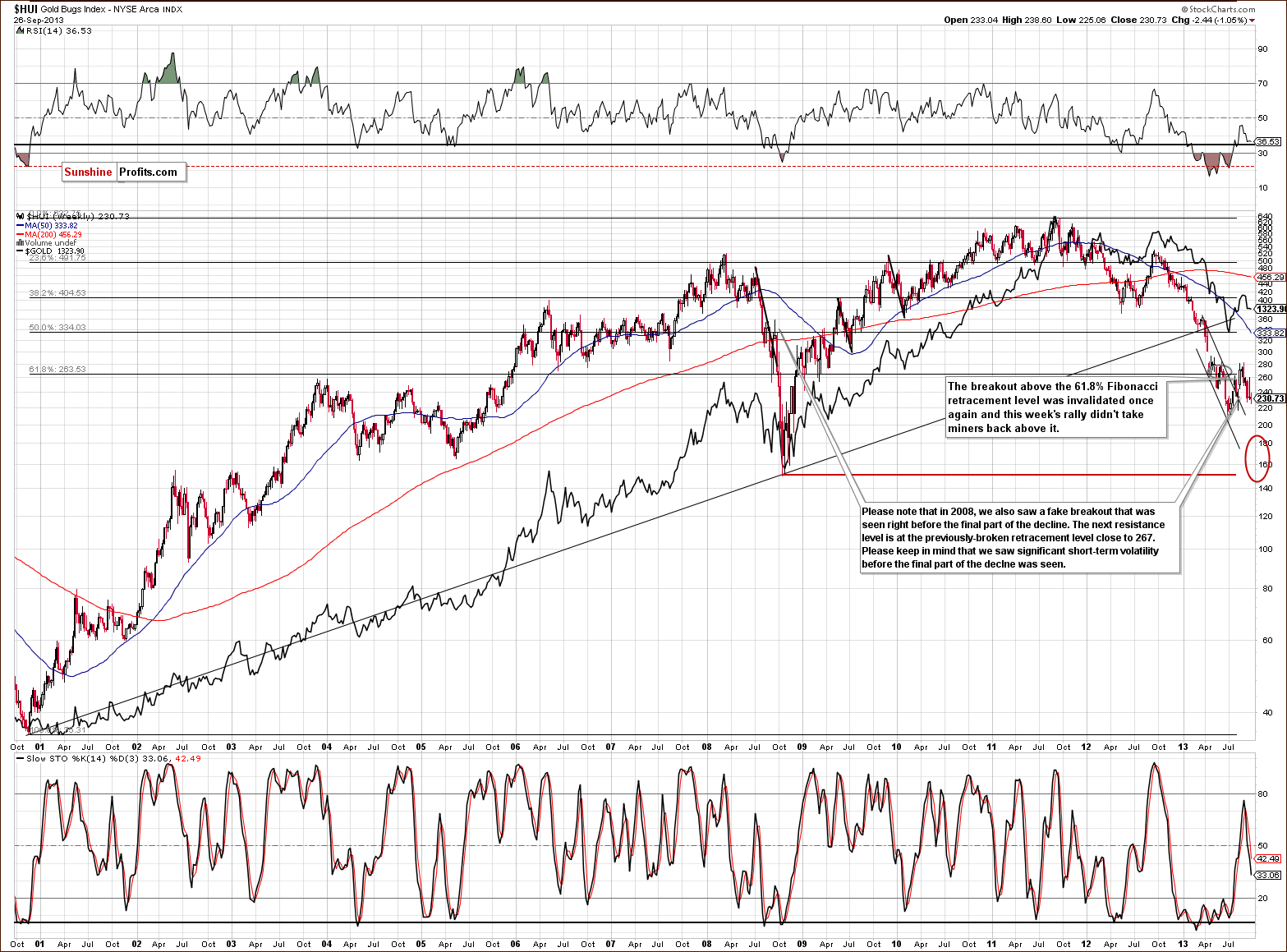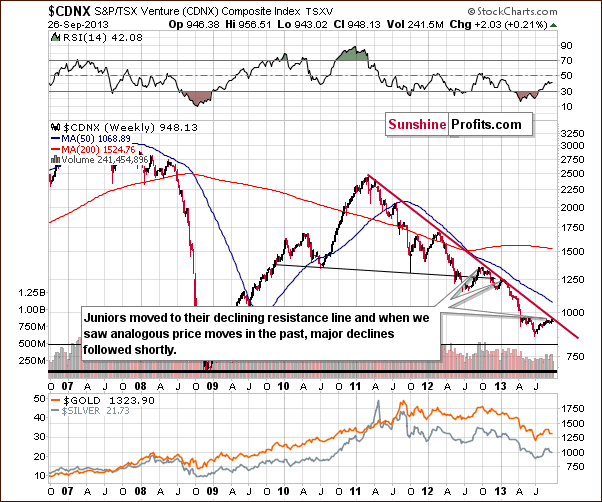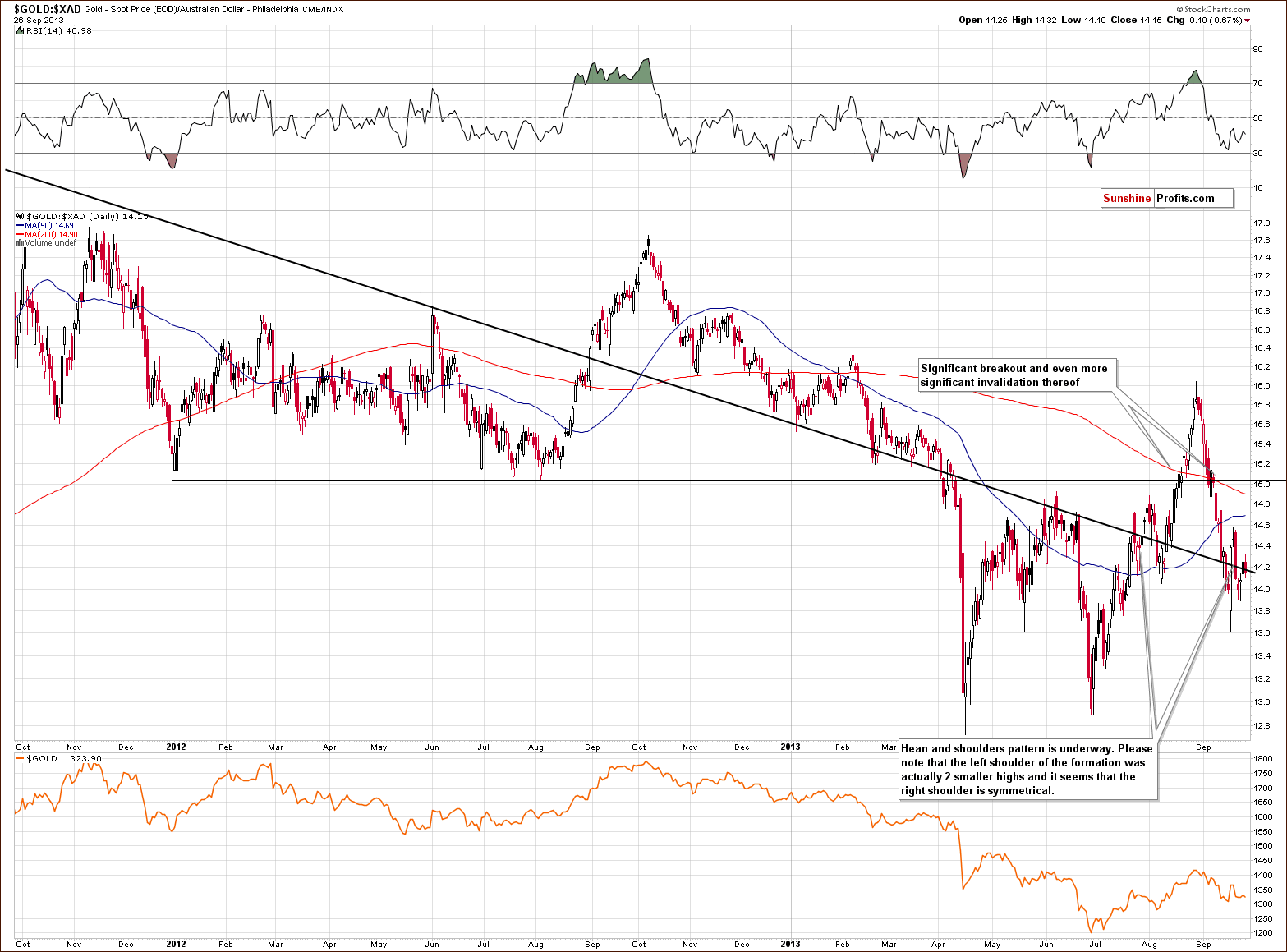The Gold Report: Are the days of easy money drawing to a close?
Don Coxe: I don’t think so. Even if the Federal Reserve begins to taper quantitative easing, the front of the curve is going to stay at zero interest rates. A trillion dollars is going through the Fed’s balance sheet, which works its way through the system. As long as the Fed keeps interest rates at zero, it’s easy money.
TGR: Will overt monetary inflation return any time soon?
DC: It will return when we have sustained economic growth. The Eurozone has been the big drag. It is definitely stronger than it was a year ago. The Eurozone has lots of problems, but it is experiencing economic growth despite the European Central Bank reducing its balance sheet in the last 12 months by almost exactly the same percentage amount that the Fed increased its balance sheet. This says that it has lots of firepower if it needs it. In addition, the Eurozone government deficits are lower than ours in terms of percentage of GDP. The Eurozone actually, despite all its highly publicized problems, has improved its financial shape relative to ours.
Also, in the last 12 months, Japan, the world’s third biggest economy, has gone from negative growth to strongly positive growth. It is doing that by printing yen at a prodigious rate. The days of easy money are going strong.
TGR: If inflation returns, will it first appear in goods or services?
DC: In goods. If I had to pick the one point at which we’ll start to see the change, it’s when the razor-thin inventory-to-sales ratio comes under strain. Corporations are controlled by people who learned in business school over the last 20 years that the first thing to manage is inventories. This way they don’t have to worry about prices going up and don’t use corporate cash to finance an inventory that may decline in value. Therefore, when things change, it will show up in the pressure that comes because companies have so little inventory on hand. Corporations will decide that they’ve got to invest in more inventory because they’ve got more demand.
TGR: Do you think that will shake loose the vast amount of capital that’s being retained by the multinationals?
DC: It will shake loose some of it, but the big thing is it will come because prices are starting to rise. The two reinforce each other.
TGR: What do increases in monetary inflation and capital growth mean for gold?
DC: Gold rose along with the Fed balance sheet for years. The two have decoupled in the last two years. I believe the reason is people have just thrown in the towel that there will ever be inflation. If you’re Waiting for Godot, at some point you can reach the conclusion that Godot may never come.
TGR: Should investors bet on gold’s return to previous highs or something in that direction?
DC: I don’t think we’re going to see anything like the double-digit inflation that we saw back in the 1970s. The big difference was the tremendous power of unions then. They all had cost of living adjustments in their contracts; the Consumer Price Index (CPI) would rise in a quarter, then automatically wage rates would increase and the two fed off each other. The weakened power of unions today has meant that we don’t have an automatic reinforcement right at the core of the system.
TGR: Let’s talk about monopolies and competition and why does the focus of big investors shift from growth to income?
DC: I’m not convinced that we’ve got a lot of monopolies out there. OPEC is no longer able to control oil prices, for example, because its share is no longer large enough to give it freedom on pricing. I believe that oil fracking will gradually start spreading from the U.S. to other parts of the world. We don’t have that monopoly, which was the big one back in the 1970s that made it possible for OPEC to quadruple the price of oil. A quadrupling of the price of oil here is impossible because the global economy would collapse with a doubling of oil prices.
TGR: Are companies borrowing money at cheap rates to increase dividends and buy back stock? And, if so, how does that affect the system?
DC: Yes, companies are basically removing from the system what I believe is the core of capitalism, that corporate cash is used to grow a business. Investors pay a high price-earnings ratio for companies because they believe the companies can reinvest that cash and sustain their growth. When we see that corporate cash is being used to buy back stock and pay dividends, the decision-making force in the system becomes stockholders redeploying cash. In the past it was the corporations themselves through their retained earnings and effective reinvestment that drove the system.
If money that people got in dividends was invested in shares of companies that were issuing new stock in order to grow their business, then the whole system would not be losing the money. When you have a system where corporate treasurers do not assume strong future growth and they assume that these zero interest rates are going to continue for a long time, the incentive to retain earnings and plan on capital expenditures (capex) goes away.
“Companies are basically removing from the system what I believe is the core of capitalism, that corporate cash is used to grow a business.”
Capex is putting money out at great cost, where companies get no immediate returns from it, whether it’s building a new building or opening up a whole area of the country. When you take that out of the system, the result is that you turn the system on its head. It used to be that the companies would, when they had the cash, decide how much was needed for capex; after that they figured out how much they would payout in dividends. The decision makers within the companies are no longer focused on creating overall economic growth through capex and expanding production.
TGR: Are we in a triple dip or a quadruple dip recession here?
DC: No, I think we’re coming out of it, but we’ve come out of it at a gigantic cost. The Fed had to quadruple its balance sheet, which raises all sorts of problems. We have no precedent in history of this kind of expansion of the Fed’s balance sheet.
The ratio of paper wealth to GDP is so high at a time when it’s going to be difficult for corporations to expand because, as I said, they will need a large amount of capex to meet rising demand at a time when there’s all that money out there. I would regard that as a virtual guarantee that at some point we’re going to see inflation.
This time inflation won’t come from rising wages. It will come from rising demand and the inability of corporations to swiftly respond to that demand. The technology industry can expand in a hurry because it keeps coming out with new products, but for most of the rest of the economy, it takes a while to build a plant and get the machinery ready and test it out before there actually is any production. That period of time, if you’ve got strong demand because there’s so much paper money, is the moment at which you will see inflation coming.
TGR: How will that affect gold?
DC: It will deal with the problem of faith in gold. When gold tracked the growth in the monetary base, which it did so well, there was a general conviction based on Milton Friedman’s theories that expanding the monetary base too fast eventually translates into inflation. Inflation is harder to stop than it is to just watch start growing.
We will see that interest rates will have to rise because of another group that has not been heard from in a long time, bond vigilantes. They are threatened with extinction. It will be a combination of rising interest rates and rising prices that will get people to say, ah-ha, Milton Friedman was right after all, if you print the money eventually you’re going to have the inflation.
TGR: When you talk about bond vigilantes are you talking about junk bonds or what’s known as private equity?
“I believe monetarism will prove to be right because all past experiments with paper money eventually led to inflation and monetary collapse. At some point the fear of that will come. You need gold for insurance.”
DC: The bond vigilantes work primarily on government bonds because they are the ones they can trade most effectively. Junk bonds are a small part of the market. With inflation the bond vigilantes sell off their 30- and 10-year bonds and move down to the 2-year note. At that point the cost of capital for expansion rises through the system because corporations can use short-term cash for some of their work, but they tend to use long-term borrowing from banks and the bond market for major projects. The cost of building those projects increases because of the steep yield curve.
TGR: Do you consider yourself to be a bear or a bull on gold?
DC: I am neutral in the short term. I’m not a bear. I’m a bull in the long term because I believe it’s not a question of if but when all this money printing eventually comes to haunt us. Gold as an asset class is so tiny in relation to the vast expansion of money around the world. With the printing that’s gone on, China has had to expand its renminbi supplies to prevent the currency from soaring relative to the dollar.
TGR: You are appearing at the upcoming Casey Fall Summit. Are you going to talk about gold there and will it be more or less what you just said?
DC: Yes. I am going to point out that the big story for gold is up until now gold has been only a bad news story. The reason why it’s in trouble right now is there always seems to be bad news in terms of inflation. People say if inflation hasn’t come now with the quadrupling of the Fed’s balance sheet, it’s never going to come and the Fed is going to have to keep on pouring out more money because the economy isn’t growing.
When the economy starts to grow all of a sudden because, as I said earlier, of the inventory cycle, we are going to start to see inflation. Gold will become a good news story in the sense it will be responding to strong economic news at a time of massive liquidity, which translates into inflation. The fact that we’ve had all that money printing, which has only prevented us from going down into a pit, at such time as this actually leads to good economic growth. That is the point at which we’re going to see people wanting to have gold. It’s because we didn’t get the direct pass over of the money printing into rising prices that gave people a loss of faith saying, well, if it hasn’t come with quadrupling the Fed’s balance sheet, it’s never going to come.
TGR: Given that, is it a good idea for investors to buy gold stocks while they’re available at basement prices?
DC: I believe that everybody should have gold insurance now. The question varies from investor to investor. What we have is an extremely high-risk central bank policy in the world and it’s high-risk based on monetarism. I believe monetarism will prove to be right because all past experiments with paper money eventually led to inflation and monetary collapse. At some point the fear of that will come. You need gold for insurance, but this time the payoff will come when the economy improves; in the past when everything was falling all around you, commodity prices were soaring out of sight. We had three recessions in the 1970s and gold went from $35 an ounce to $850. But this time, gold is going to appreciate when we start getting 3% GDP growth.
TGR: Thank you for your insights.
Don Coxe has 40 years of institutional investment experience in Canada and the U.S. As a strategist and investor, he has been engaged at the senior level in global capital markets through every recession and boom since the onset of stagflation in 1972. He has worked on the buy side and the sell side in many capacities and has managed both bond and equity portfolios and served as CEO, CIO and research director. From his office in Chicago, Coxe heads up the Global Commodity Strategy investment management team, a collaboration of Coxe Advisors and BMO Global Asset Management. He is advisor to the Coxe Commodity Strategy Fund and the Coxe Global Agribusiness Income Fund in Canada, and to the Virtus Global Commodities Stock Fund in the U.S. Coxe has consistently been named as a top portfolio strategist by Brendan Wood International; in 2011, he was awarded a lifetime achievement award and was ranked number one in the 2007, 2008 and 2009 surveys.’
Learn more about the agenda for the Casey Research Summit, October 4-6.
Want to read more Gold Report interviews like this? Sign up for our free e-newsletter, and you’ll learn when new articles have been published. To see a list of recent interviews with industry analysts and commentators, visit our Streetwise Interviews page.
DISCLOSURE:
1) Peter Burn conducted this interview for The Gold Report and provides services to The Gold Report as an independent contractor.
2) Streetwise Reports does not accept stock in exchange for its services or as sponsorship payment.
3) Don Coxe: I was not paid by Streetwise Reports for participating in this interview. Comments and opinions expressed are my own comments and opinions. I had the opportunity to review the interview for accuracy as of the date of the interview and am responsible for the content of the interview.
4) Interviews are edited for clarity. Streetwise Reports does not make editorial comments or change experts’ statements without their consent.
5) The interview does not constitute investment advice. Each reader is encouraged to consult with his or her individual financial professional and any action a reader takes as a result of information presented here is his or her own responsibility. By opening this page, each reader accepts and agrees to Streetwise Reports’ terms of use and full legal disclaimer.
6) From time to time, Streetwise Reports LLC and its directors, officers, employees or members of their families, as well as persons interviewed for articles and interviews on the site, may have a long or short position in securities mentioned and may make purchases and/or sales of those securities in the open market or otherwise.

 Hedging
Hedging

 The year 2013 in the gold investment market will be remembered as the year of China, so we’ve produced a stunning infographic detailing China’s great golden rise to power.
The year 2013 in the gold investment market will be remembered as the year of China, so we’ve produced a stunning infographic detailing China’s great golden rise to power.













